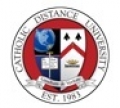The Controversy Continues after Nicaea
The decision of Nicaea should have ended the controversy but unfortunately it only gave rise to a related one which required decades to work out satisfactorily. The Council Fathers used seven different expressions drawn almost verbatim from the text of the NT to make it clear that Jesus Christ was both God and man, that he had both a human and a divine nature, that he existed from all eternity with the Father, and, most especially, that he was begotten, not made like all creatures.
The concept of “begetting” which ordinarily would imply a beginning in time and thus a created origin was finessed with the concept of an eternal generation. The Son is generated from the Father and proceeds from the Father but yet has no origin and no beginning and there was never a time when he did not exist. This was obviously language that points to a mystery beyond the powers of human reason to fathom.
But what might be termed the second Arian controversy arose as a result of special terminology which the creed did not draw directly from the NT. To safeguard the Son’s divine nature, the Council Fathers felt it necessary to pinpoint the exact nature of Jesus with respect to his divinity and it was here that they employed technical philosophical language to spell this out precisely.
But since the mystery of the Trinity was above human reason, philosophical terms would have to be employed in novel ways. The word the Council Fathers chose was the Greek word homoousios which was a compound word made from the Greek ousia which means roughly “essence” and homo which means “one” or “the same.” Homousios was translated into Latin by the word consubstantia—from the Latin cum (with) plus substantia (substance)—meanings that the Father and the Son, while they are two individuals, clearly have only one substance that is Divine. The term homoousios can be rendered in English by some equivalents such as “as one in being,” or “of one substance.”
According to the Council of Nicaea, the Son’s nature is Divine just as the Father’s; and it is equal to it in every way. This does not designate the numerical identity of substance, namely that the two Persons of the Father and the Son are one and the same substance. The Council did not concern itself with this problem. Its sole intention was to affirm unequivocally that the Son is perfectly God, as is the Father. The Council had closed the door to Arianism but had left a linger question: if the Father and Son were one in divine nature in what sense could they be two?
The concept of “begetting” which ordinarily would imply a beginning in time and thus a created origin was finessed with the concept of an eternal generation. The Son is generated from the Father and proceeds from the Father but yet has no origin and no beginning and there was never a time when he did not exist. This was obviously language that points to a mystery beyond the powers of human reason to fathom.
But what might be termed the second Arian controversy arose as a result of special terminology which the creed did not draw directly from the NT. To safeguard the Son’s divine nature, the Council Fathers felt it necessary to pinpoint the exact nature of Jesus with respect to his divinity and it was here that they employed technical philosophical language to spell this out precisely.
But since the mystery of the Trinity was above human reason, philosophical terms would have to be employed in novel ways. The word the Council Fathers chose was the Greek word homoousios which was a compound word made from the Greek ousia which means roughly “essence” and homo which means “one” or “the same.” Homousios was translated into Latin by the word consubstantia—from the Latin cum (with) plus substantia (substance)—meanings that the Father and the Son, while they are two individuals, clearly have only one substance that is Divine. The term homoousios can be rendered in English by some equivalents such as “as one in being,” or “of one substance.”
According to the Council of Nicaea, the Son’s nature is Divine just as the Father’s; and it is equal to it in every way. This does not designate the numerical identity of substance, namely that the two Persons of the Father and the Son are one and the same substance. The Council did not concern itself with this problem. Its sole intention was to affirm unequivocally that the Son is perfectly God, as is the Father. The Council had closed the door to Arianism but had left a linger question: if the Father and Son were one in divine nature in what sense could they be two?
| Previous page on path | Introduction, page 6 of 12 | Next page on path |

Discussion of "The Controversy Continues after Nicaea"
Add your voice to this discussion.
Checking your signed in status ...